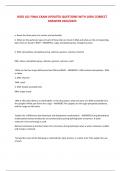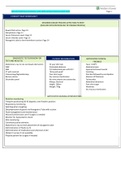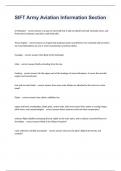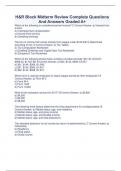Exam (elaborations)
BIOD 101 FINAL EXAM UPDATED QUESTIONS WITH 100% CORRECT ANSWERS 2024/2025
- Course
- Institution
BIOD 101 FINAL EXAM UPDATED QUESTIONS WITH 100% CORRECT ANSWERS 2024/2025 a. Name the three parts of a nucleic acid nucleotide. b. What are the particular types of each of these that are found in DNA and what are the corresponding types that are found in RNA? - ANSWERS a. sugar, phosphate gro...
[Show more]






